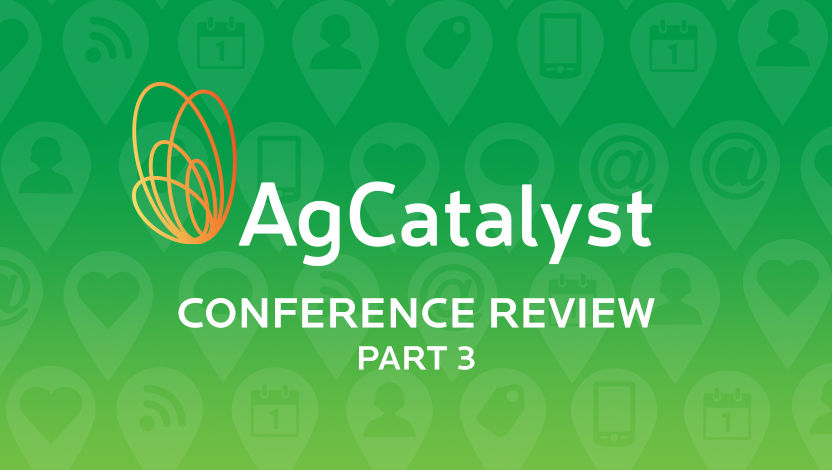
This post is the third in a three-part series exploring top takeaways from AgCatalyst 2016, a marketing and communications conference focused on the agriculture and food industries. Read post one on the how to becoming a high-performing marketer and post two on the importance of making your customers feel good.
[inlinetweet prefix=”null” tweeter=”null” suffix=”– @joeschwarcz”]“Humans are chemically complex beings living in a chemically complex world,”[/inlinetweet] said Joe Schwarcz, director of office for science and society at McGill University.
Schwarcz was a keynote speaker at AgCatalyst 2016, where he discussed the science behind our food. His presentation was complemented by Dave Kurns, editorial content director for Successful Farming. Supported by a panel of three millennial moms, Kurns presented eye-opening information and statistics on what drives food purchase decisions today.
The two presentations revealed that food purchase decisions of millennial moms do not align with science in three main ways:
#1: The importance of science in food is vastly different.
According to research from Successful Farming, up to 48% of millennial moms say GMO-free is important in their food decisions. What’s more, 73% purchase organic food at least occasionally. Scientifically, Schwarz stated that the presence of chemicals does not indicate a presence of risk. He believes that [inlinetweet prefix=”null” tweeter=”null” suffix=”– @joeschwarcz”]perception of risk – rather than scientific fact – is driving food purchase decisions.[/inlinetweet] Millennials are eating more at home, cooking their own food and eating less processed food, which indicates that their food dollars are being spent in line with their values.
#2: Organic food production is polarizing.
“If organic production was the solution to feeding the world’s growing population, there would be no need for synthetic pesticides,” said Schwarcz. However, organic choices among millennials has increased almost 20% in the past 16 years. And 81% of millennial consumers are willing to pay a premium for foods with a perceived health benefit, such as foods labeled organic.
While science and millennial moms are at odds over which production method is most advantageous, integrated pest management practices utilize the best attributes of both production systems and could be an important solution for agriculture to explore for long-term sustainability.
#3: Technology has a different purpose.
“Taking no risk is the biggest risk of all,” said Schwarz. He stressed the need to use the best tools and techniques science has to offer to help producers meet the global food demand.
When applied to science and food production, technology allows us to feed a growing population. For millennial moms, technology allows instant access to online information about food, recipes and food choices – often from peers and social media influencers. Regardless of the medium, technology plays a large role in assisting agriculture to create a safe food supply in which consumers have confidence.
Minding the gap
As agricultural marketers, being aware that 98% of consumers do not live on a farm is key to understanding how to educate consumers, and science alike, on where our food comes from and why choice matters. Recognizing these gaps can help reach this influential audience and connect with them on what matters most to the food they put on their table for their families.
Don’t forget to check out post one and post two on this series to learn how to become a high-performing marketer and why you need to make your customers feel good.

